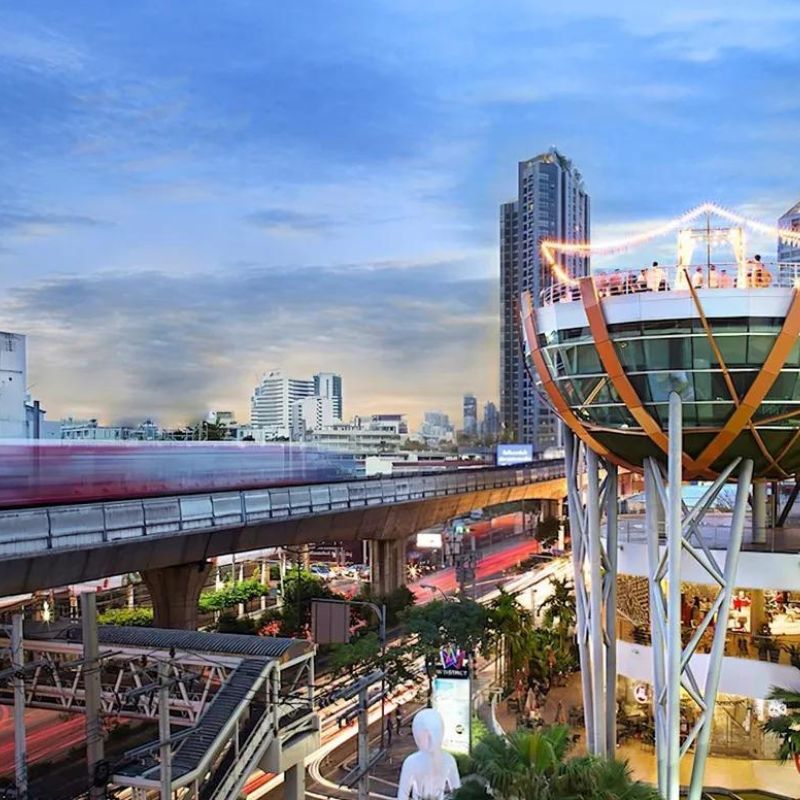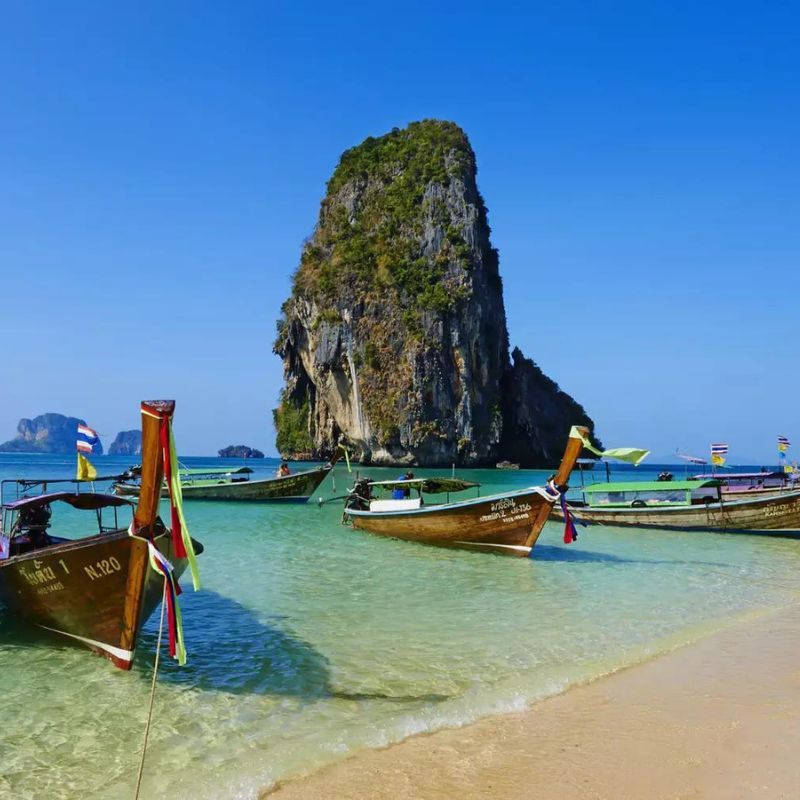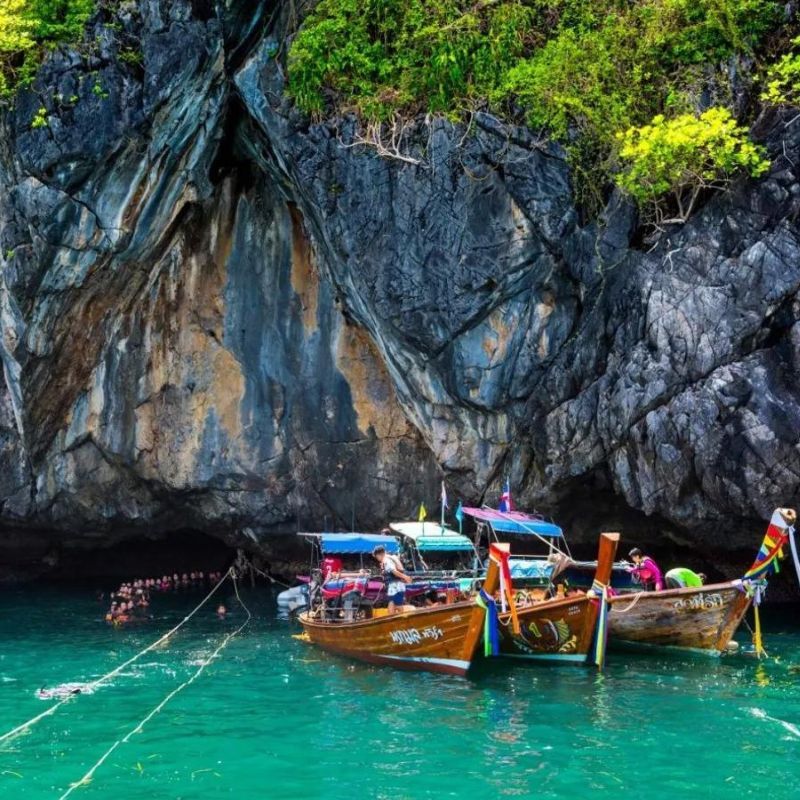
Love to go with the flow? Discover some of the best waterfalls in Thailand, along with the best places to eat and stay when you’re there.
Thailand is known for great food, nightlife and islands with stunning beaches, but its serene landscape has much more to offer. We are talking about it’s mesmerising waterfalls and if you are planning a trip anytime soon, don’t forget to add these to your itinerary.
Best waterfalls in Thailand you should visit
Kanchanaburi
Erawan Fall
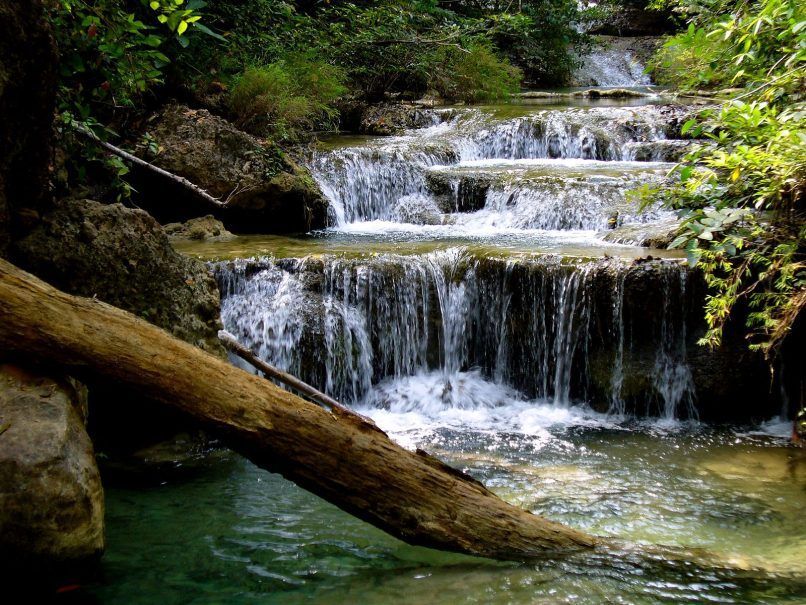
Arguably one of the most well-known waterfalls in Thailand, Erawan Fall features 7 different tiers, which can take visitors around three hours to reach the top. The name derives from the mythical three-headed elephant, which resembles the shapes of the falls. Despite how it sounds, Erawan Fall is quite beginner-friendly to reach the top.
Huai Mae Khamin Waterfall

Located inside Srinagarind Reservoir, this seven-tier waterfall promises one of the most picturesque scenes in Kanchanaburi. While you can reach Huai Mae Khamin Waterfall’s fourth tier by car, it’s highly recommended to take the boat across the reservoir instead–just to save time. You can also bring your camping essentials here, but only the first and the fourth floors are open for campers. Still, it’s an ideal spot to unzip your tents and enjoy the scenery.
Kroeng Krawia Waterfall

Just a stone’s throw away from the Khao Laem National Park, this waterfall has a glorious spot for you to enjoy the misty, cool morning. Though smaller in size compared to the others, Kroeng Krawia doesn’t require you to take up the whole journey to partake in its beauty. Plus, for campers, the place is also complete with basic facilities–toilets, electricity, and of course WIFI for your Instagram stories.
Where to eat in Kanchanaburi
With its close proximity to the rivers, your Kanchanaburi trip will never be completed without sampling some of the freshly caught redtail catfish (pla khang). Head to Phai Rim Khwae, an old-school riverside restaurant where you can indulge the fresh, plumb pla Khang for cheap–they have a harvest pit right next to your seating, so its freshness is unquestionable.
Another local speciality is the termite mushroom, het khone, usually grown in forested areas. Due to its rarity–as it’s harvestable once a year–the dishes made with this magic mushroom could come off as pricey. Thaiseree Restaurant, a long-standing Thai establishment in town, does yum het khone (termite mushroom spicy salad) quite well.
Where to stay in Kanchanaburi
Where else should you stay if not by the Kwai River? Cross River Kwai, situated near River Kwai Noi, promises an idyllic retreat with a panoramic view of the river with its chic-floating rooms. In case you’re looking for more budget-friendly options, The Hub Erawan Resort, conveniently located right at the Erawan National Park, is perfect for that.
Ubon Ratchatani
Huay Luang Waterfall
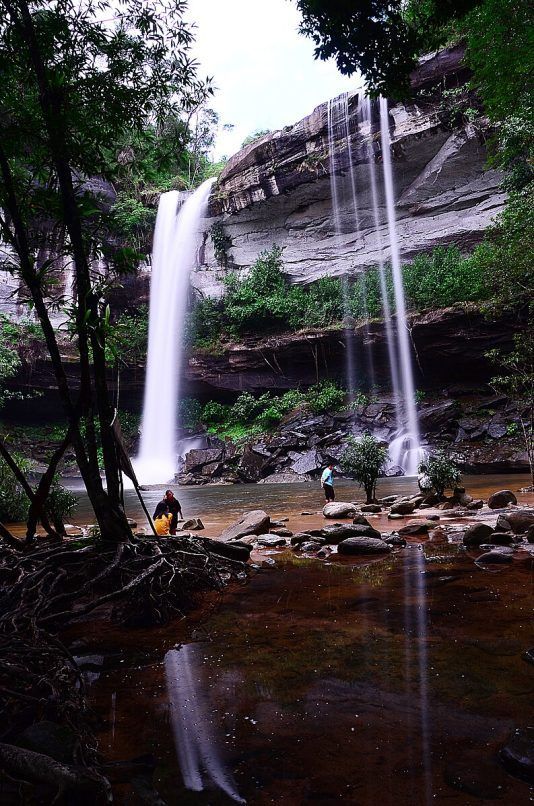
This 45-meter-tall waterfall located in Phu Chong Na Yoi National Park comes with a sandy beach. It takes 272 steps to reach this astonishing waterfall, but it’s still worth the trek.
Saeng Chan Waterfall
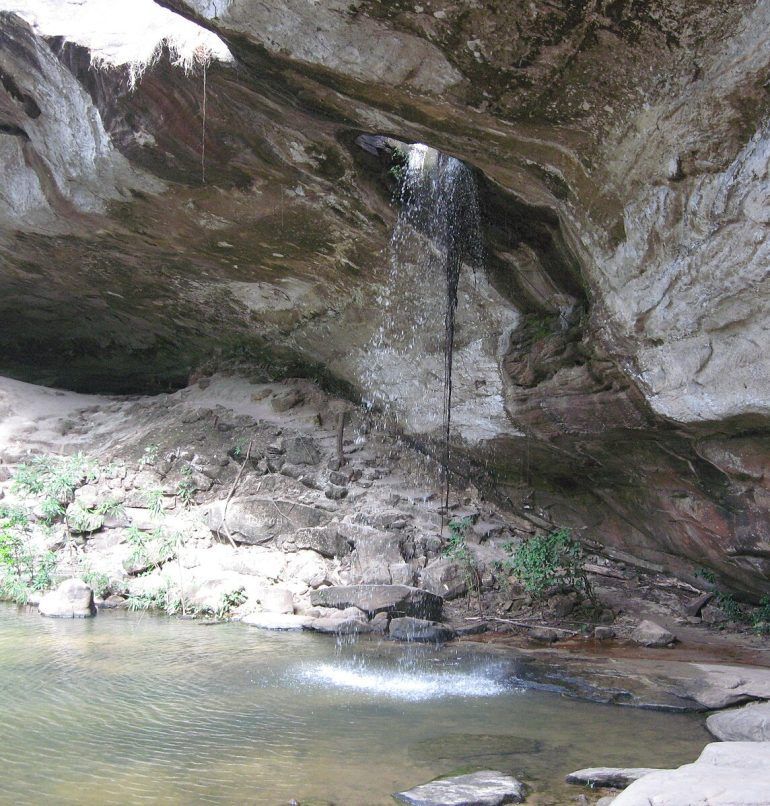
This waterfall is aptly named for a reason: a tunnel of light from which the water drops, and at night, the moonlight reflects on the water below. As spectacular as it may seem, Saeng Chan Waterfall is relatively smaller compared to the others, so there’s no need to spend too much time here.
Soi Sawan Waterfall
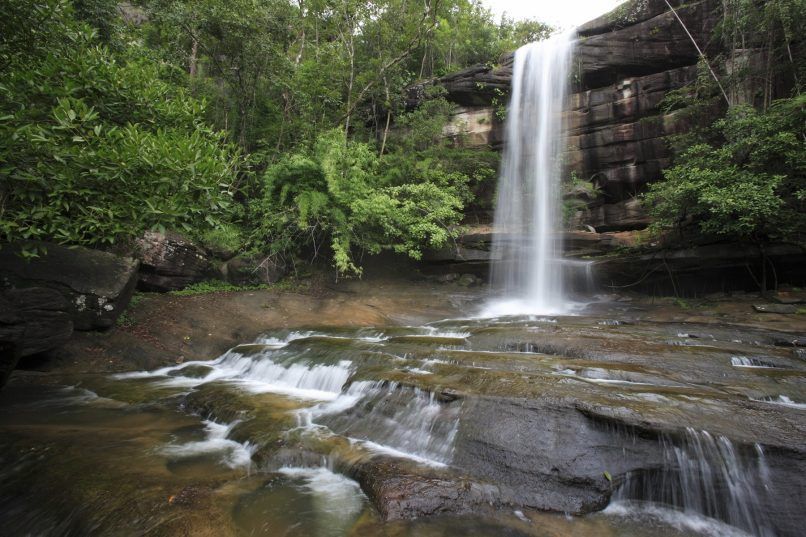
This largest waterfall is the perfect stopover when you head to Ubon Ratchathani. This cascading water is fed by two separated streams joining together. Just a one-and-a-half hour drive from the city, Soi Sawan is also easily accessed from the car parks. Plus, there’s a 42-rai flower garden nearby when you finish exploring the waterfall.
Where to eat in Ubon Ratchatani
As the Michelin Guide Thailand expanded its repertoire to Northeastern provinces last year, it’s not a total surprise that Ubon Ratchathani can be your next culinary trip after checking out its cataracts. Guayjab Ubon, the 70-year-old legendary noodle spot, serves fresh, springy noodles with mouthwatering intestines. Another interesting spot, despite not being featured in the guide, is Zao, a hip Isaan restaurant that serves underrated dishes like spicy watermelon with fermented fish sauce and deep-fried pla yon (freshwater shark catfish).
Where to stay in Ubon Ratchatani
The Goose Farm Stay is a three-room farm-style hideaway in Ubon Ratchathani where you can enjoy the idyllic life in Isan–think chickens, ducks, and gooses roaming around. If you’re looking for a more contemporary chic stay, head to De Lit Ubon, a Mediterranean-inspired hostel with rustic vibes–the place also serves some fusion foods blended with their local specialities as well.
Tak
Thi Lor Su Waterfall
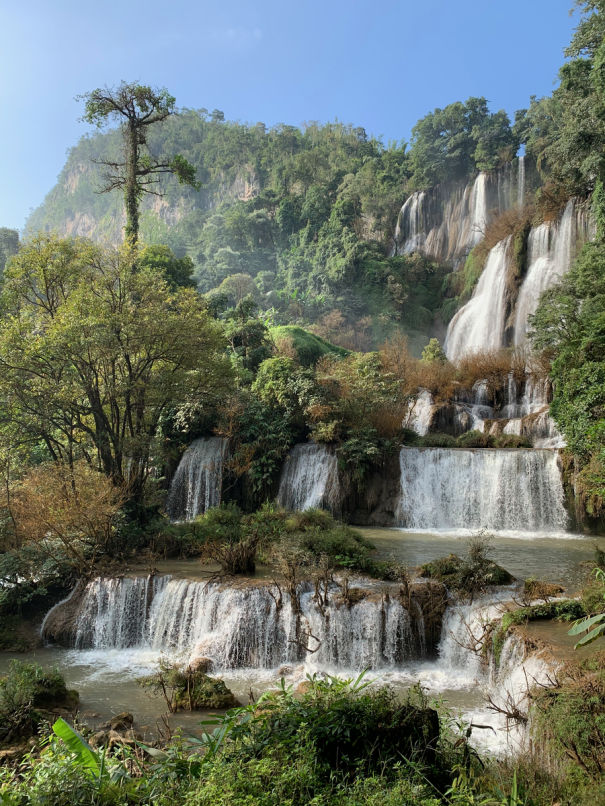
Nestled inside Umphang Wildlife Sanctuary, Thi Lo Su Waterfall reigns as the country’s largest, promising a breathtaking cascade with a lush green backdrop of dense rainforest. If you’re into rafting, this is the place.
Pi Tu Gro Waterfall
This heart-shaped waterfall in Tak has replaced Mae Hong Sot’s Mae Surin Waterfall as the highest water cascade in Thailand, boasting over 500 meters in height. While you can explore the area by yourself, it’s still highly recommended that you request tour guides from your resorts or hotels to accompany you on the trip.
Pha Charoen Waterfall
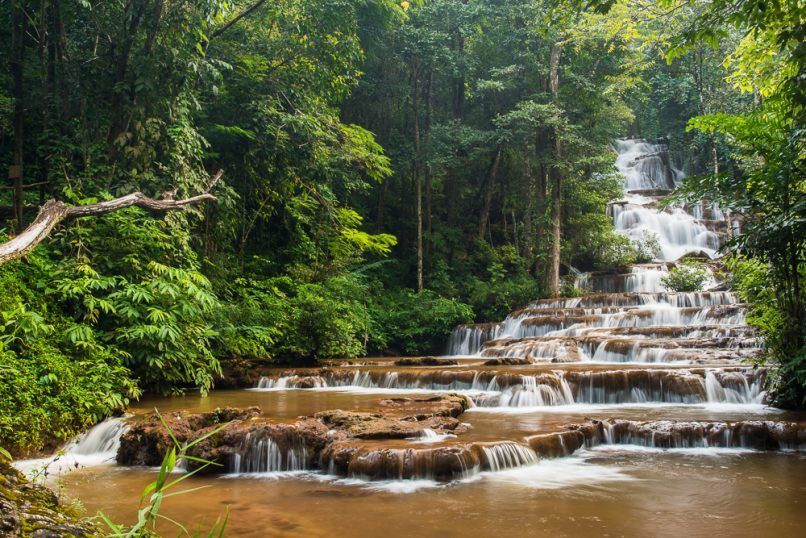
This Tak’s limestone waterfall has over 90 tiers and a field of orange Siam tulips that typically bloom during the rainy season.
Pa Wai Waterfall
Hidden in the dense forest of the Khirirat Nikom, the Pa Wai Waterfall is a marvel of nature. Formed from limestone and fed by the Huai Wai stream, it boasts over 100 terraces and a completely forested area.
Shop the best travel experience here
This story first appeared here.
Related: Experience The Rich Heritage Of Thailand Through These UNESCO World Heritage Sites


